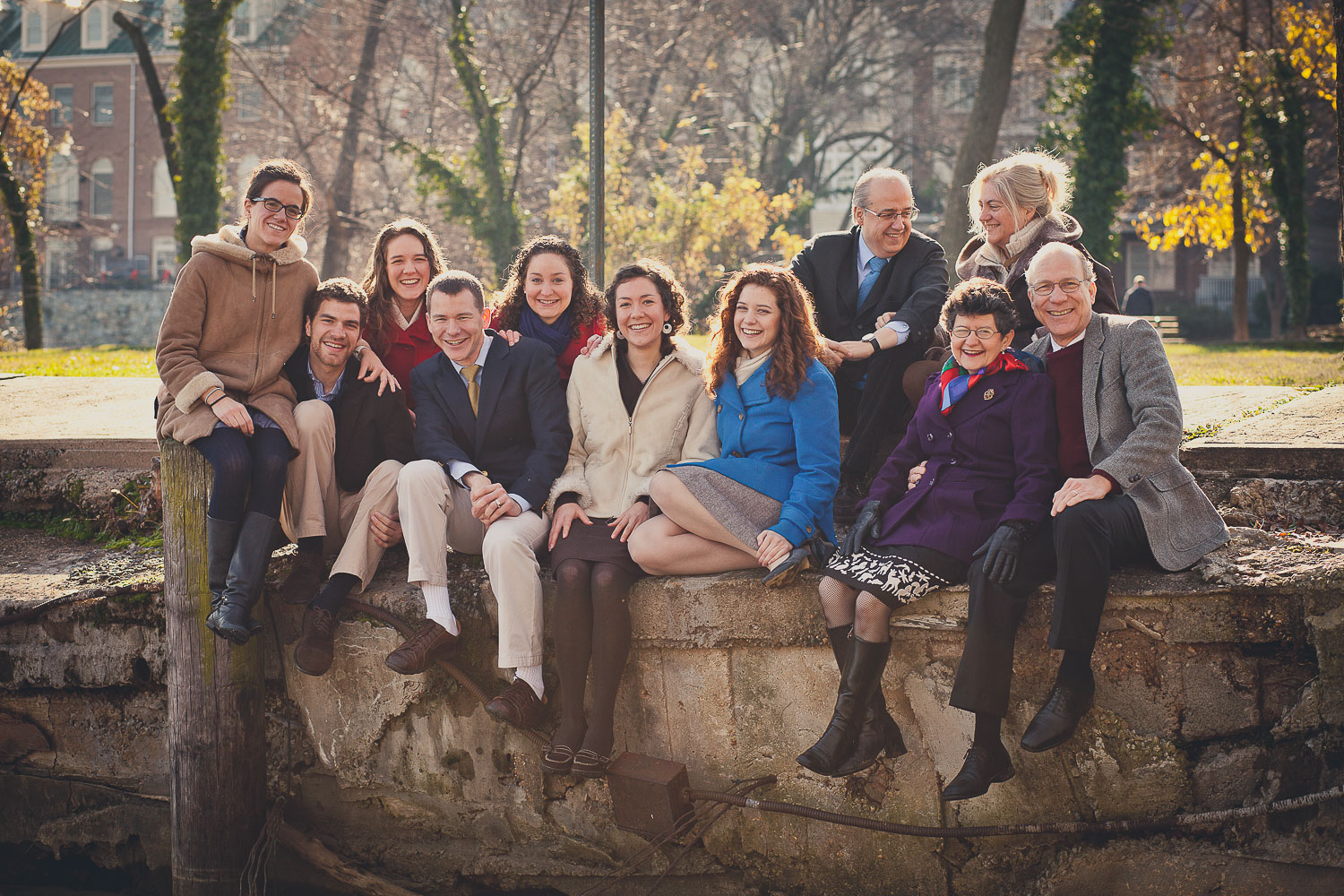One of the challenges photographers face is posing. It’s a conundrum because it requires a kind of authority most of us aren’t used to having: The authority to say if something looks good or bad. So much of this authority is earned and demonstrated to your subjects in the swiftness and confidence with which you pose them. Therefore, photographers spend a lot of time working on just where to place a loose hand, and exactly how a person’s back should arch, or how their legs should cross. But in all this fuss, they frequently lose sight of the spirit in their subject.

Photo by William Petruzzo
Sometimes the individuality of your subject is intentionally obscured, such as in advertisements for perfume or business wear. But when your subject’s individuality is important–family portraits, wedding photos, staff portraits, and so on–the lasting quality of the photo will most likely be decided by their face, not their bodies.
For that reason, one of the cardinal skills of a great portrait photographer is their ability to evoke a predictable response from their subject.
In the last 5 years, my company Petruzzo Photography, has shot about 400 portrait sessions with couples, families, individuals and businesses. We’ve seen just about every comfort level subjects might walk in with. Here are some of the principles and techniques we’ve used in that time to pull honest smiles out of them. They’re not for everyone in every situation, but what tool is? If you find any of these useful, I’d love to hear about it on Twitter!

Photo by William Petruzzo
1. Be Ready for the Real Smile
When someone who is ready for a photo smiles, the smile they provide is a practiced smile. It doesn’t get into the corners of their eyes, it doesn’t spread through their cheeks in the same way a real one does. The best smile happens when they can no longer hold their practiced smile and they let it go into something positive.
If you notice your subject using a practiced smile, you can take a few photos, pause for a moment and pull the camera away from your face just long enough to pay them a compliment and imply that this little set of images is done. At this point, they will often break into the authentic smile.
Here’s where you need to be ready. They will often relax their whole body to some degree and whatever arrangement you were using will become a little unstable. But their facial expression will almost certainly be one of honest positivity. Catch it while it’s there!
2. Create a Split-Second of Uncertainty
If you’re working on an arrangement and you notice your subject is using their practiced smile, you can pull out a real smile by giving them a chance to laugh off some uncertainty.
One of the simplest ways to create a little uncertainty is by mumbling something under your breath in no particular direction. For example, you could mumble “what a funny bird over there”. The subject will want to understand what you’ve said, in case it was some kind of instruction. Instead of repeating yourself though, just continue shooting and say “Oh, I just saw a weird bird”.
Somewhere between being glad they hadn’t missed anything important and laughing at your eccentricity, they will produce a genuine smile.
3. Pay an Unexpected or Uncommon Compliment
It seems self evident that compliments often lead to smiles. But I would add an important distinction that improves those chances. Uncommon compliments work best.
What do I mean by uncommon compliments? Either complements the subject isn’t used to hearing, or compliments given in a way they are not used to hearing them. For example, “You look great!” is a common compliment and it might not even be processed as meaningful enough to warrant a smile. “That dress is great, I love the colors!” is an uncommon compliment, you’ve given her something specific to feel good about. Or, “That dress is so funky, the colors are awesome” would be an uncommon way to pay the same compliment.
In both cases, the uncommon nature of the interaction is likely to illicit a genuine smile.
This same concept works with men and women, although men tend to prefer compliments surrounding their reputation, while women tend to prefer compliments surrounding their appearance choices. Unless you have established a good relationship already, you should avoid complimenting your subject’s innate qualities as this can sometimes come across as flirtatious. For example, “You have such beautiful eyes” versus, “You did an excellent job on your makeup.”

Photo by William Petruzzo
4. Ask them to “Zack Morris”
This works in situations where your subject is fairly relaxed already and what makes it work isn’t limited to this specific technique.
When you’ve been working on one arrangement for a little while and your subject’s smile has become tired or practiced, teach them to do a Zack Morris. That is, look away for a moment and come back with a surprised-to-see-you smile. A similar instruction might be telling them to look away and then come back with their best Blue Steel.
The look they give you isn’t going to be a great facial expression. But a few seconds later, it will turn into a very genuine smile. Be ready!

Photo by William Petruzzo
5. Give Them Clearly Impossible Instructions
This works best with subjects who have already gotten fairly comfortable with you personally. To produce a genuine smile, you can play their respect for your authority off their own sense of good judgement. When the tension is released, a genuine smile almost always follows.
The concept goes like this–once you have your subject roughly positioned, ask them to do something they physically cannot do. For example, you might position them and then, with all seriousness, say something like, “Okay, now touch your eyebrows with your nose.” As long as they believe you know what you’re doing, this will cause a moment of cognitive dissonance. They’ll pause for a moment while they wonder whether you were serious.
You can let this tension hang for just a moment before resolving it with a simple laugh saying “I was just kidding, go ahead and point your chin right here…”.
With the relief of resolved dissonance, simple instructions like pointing their chin in a particular direction are much easier to follow, and they will wear the sense of relief on their face in a more honest and enthusiastic smile.








6 Comments
Great tips. I will give them a try.
Good article. Though I don’t consider myself a skilled photographer, I have found that asking people to say “prunes” instead of “cheese” often produces a real smile.
Thanks for your original ideas. Looking forward to trying them..
Very good ideas. I will definitely remember when I smile for a photograph.
Great tips, I can see how they’d work, but who or what is Zac Morris and Blue Steel? Can anyone provide a translation for this ignorant Limey?
Learn this from the first photographer I worked for, especially with kids, have them count to three. The word three is the magic. She would also make up silly words like “fuzzy pickles” kids love it. Which in turns makes the adult smile and loosen up.